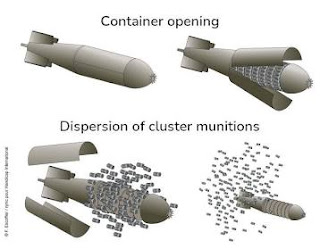BESIDES THE MONEY, THIS IS WHY UKRAINE AND NATO NEEDS THE US BEYOND OUR MONEY: [They Don't Make The Right STUFF to Fight Russia] THEY DEPEND ON US TO FIGHT RUSSIA!!!
The United States and Europe have different defense industrial bases, and their munitions production capabilities reflect their respective strategic priorities, historical investments, and industrial capacities. Here’s a breakdown of the munitions the U.S. produces that Europe does not (or produces in limited quantities), and the munitions Europe produces but may not produce enough of to sustain a prolonged conflict with Russia:
Munitions the U.S. Produces That Europe Does Not (or Produces in Limited Quantities):
1. Long-Range Precision Munitions:
- Tomahawk Cruise Missiles: The U.S. has a significant stockpile and production capacity for long-range cruise missiles like the Tomahawk, which Europe does not produce in comparable quantities.
- JASSM (Joint Air-to-Surface Standoff Missile): A stealthy, long-range air-launched cruise missile produced by the U.S., with no direct European equivalent.
- LRASM (Long-Range Anti-Ship Missile): A advanced anti-ship missile with no European counterpart.
2. Hypersonic Weapons:
- The U.S. is developing hypersonic missiles (e.g., AGM-183A ARRW, LRHW), while Europe lags behind in this area.
3. Advanced Air-to-Air Missiles:
- AIM-120 AMRAAM and AIM-260 JATM:** The U.S. produces advanced beyond-visual-range air-to-air missiles, which Europe does not produce in the same quantities or with the same technological sophistication.
4. Heavy Bombs and Guided Munitions:
- GBU-43/B MOAB (Massive Ordnance Air Blast):
The U.S. has unique large-yield bombs that Europe does not produce.
- JDAM-ER (Joint Direct Attack Munition Extended Range): The U.S. produces large quantities of precision-guided bombs, while Europe relies more on imports or limited domestic production.
5. Ballistic Missiles:
- The U.S. has a significant stockpile of ballistic missiles (e.g., ATACMS), while Europe has largely abandoned this category of weapons.
6. Naval Munitions:
- Standard Missiles (SM-2, SM-6):
Advanced naval air defense and anti-ballistic missiles produced by the U.S., with no direct European equivalent.
- Harpoon and Naval Strike Missiles: While Europe produces some anti-ship missiles, the U.S. has a larger and more diversified stockpile.
7. Artillery Shells (155mm):
- The U.S. has significantly ramped up production of 155mm artillery shells (aiming for 100,000+ per month by 2025), while European production remains lower.
Munitions Europe Produces but Does Not Produce Enough Of:
1. 155mm Artillery Shells:
- Europe has struggled to meet the demand for 155mm shells, which are critical for Ukraine’s fight against Russia. While countries like Germany, France, and Poland produce these shells, their combined output is insufficient for a prolonged conflict.
2. Anti-Tank Guided Missiles (ATGMs):
- Europe produces ATGMs like the Spike (Israel/Germany) and Javelin (co-produced with the U.S.), but production capacity is limited compared to demand.
3. Short-Range Air Defense Systems (SHORAD):
- Europe produces systems like the IRIS-T SLM (Germany) and CAMM (UK), but these are in short supply and high demand.
4. Multiple Launch Rocket Systems (MLRS):
- Europe produces systems like the M270 and MARS II, but production rates are low, and stockpiles are limited.
5. Ammunition for Small Arms:
- Europe produces small arms ammunition (e.g., 5.56mm, 7.62mm), but production capacity is insufficient to meet wartime demands.
6. Cruise Missiles:
- Europe produces some cruise missiles (e.g., Storm Shadow/SCALP), but stockpiles are limited, and production rates are low.
7. Drones and Loitering Munitions:
- Europe is developing drones and loitering munitions (e.g., Rheinmetall’s LUNA drones), but production is not yet at scale.
8. Electronic Warfare (EW) Systems:
- Europe produces EW systems, but these are often in limited quantities and not standardized across NATO.
Key Challenges for Europe:
- Fragmented Defense Industry:
Europe’s defense industry is fragmented across multiple countries, leading to inefficiencies and duplication of efforts.
- Underinvestment:Decades of underinvestment in defense production have left Europe with limited surge capacity.
- Supply Chain Issues:Europe relies on global supply chains for critical components, which can be disrupted during a conflict.
#Ukraine #Russia #NATO #MUNNITIONS
Conclusion:
The U.S. has a significant advantage in producing advanced, long-range precision munitions and maintaining large stockpiles of key weapons. Europe, while capable of producing many critical munitions, lacks the scale and industrial capacity to sustain a prolonged high-intensity conflict without U.S. support. Both regions are working to address these gaps, but it will take time to build the necessary production capacity.
#Europe #Russia #Ukraine #Military #MUNNITIONS










